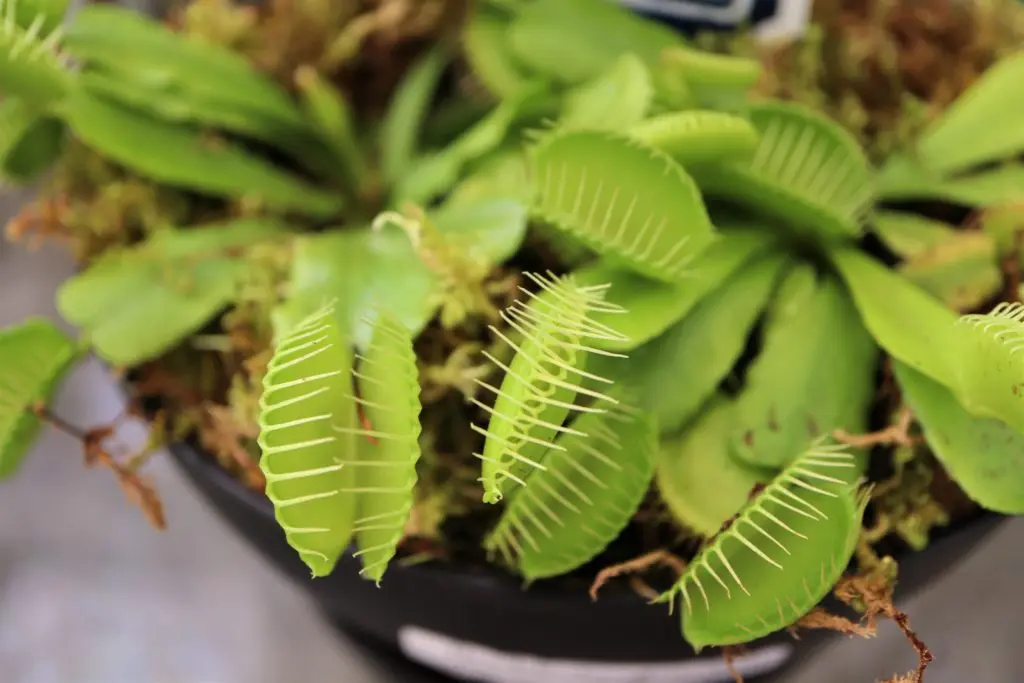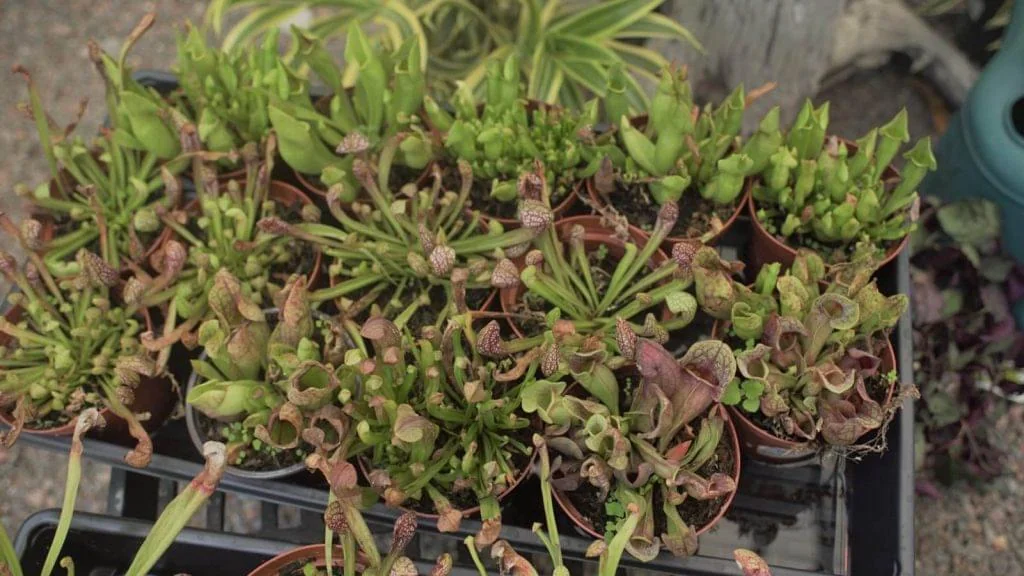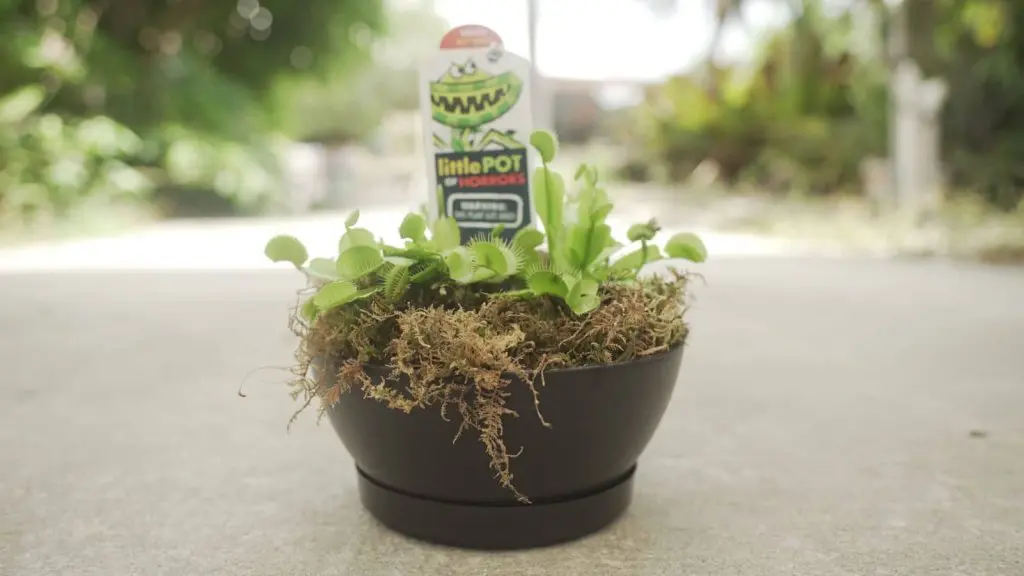by Amanda Rose Newton
Carnivorous bug-eating plants are found nearly everywhere on Earth (except Antarctica) and have managed to live in areas most other species could not. This is due to their ability to digest living organisms to generate nitrogen needed to support growth, which we often supply as fertilizer.

Unfortunately, despite their bug-catching abilities, they likely will not help you out in an infestation of flies. However, there is research showing that some carnivorous plants are better than others when it comes to bug control.
Read on for all things carnivorous plants!
Carnivorous plants are usually grouped into 4 different categories:
- Venus fly traps (Dionaea spp.)
- Sundews (Drosera spp.)
- Pitcher plants (Nepenthes spp.)
- Aquatic pitcher plant (Sarracenia spp.)
Venus fly traps are a perennial favorite, not only for their recognizability but also for their ease of care. The Venus flytrap might look exotic, but most of what is sold in stores is likely from the Carolinas. Today, flytraps are popularly produced through micropropagation, which uses tissue from plants to create clones.
Sundews are loved by collectors for their fascinating color spectrum and variety of sizes.
Pitcher plants can be sold as a single piece or as a whole hanging basket’s worth, which makes for an interesting conversation piece or gift. Of the plants covered so far, only one has a species representative in the state of Florida– the pitcher plant.

If you are having a bit of an issue with house flies and fruit flies, your best bet is the sundew (Drosera spp.). In a study observing feeding behavior among the most common groups, the sticky tentacles of the sundews could not be matched in fly consumption power (Poppinga S, et al 2012).
Part of the appeal of these fascinating plants is their low needs! Follow the recommendations below for the best results.
Water and Light Requirements
Sundews, pitchers, and flytraps all need at least 6 hours of direct/indirect light per day as all plants do. Indirect typically means there is a screen or a window there if you are keeping it on a lanai, in a sunroom, or inside.

Since these plants love bogs and swamps, it shouldn’t be a surprise that they like it on the moist side. This can be easily attained by using an absorbent material like coconut coir or vermiculite in your potting mix. That way, you won’t need to water too much.
Pro Tip: Make sure you use dechlorinated water! They are sensitive to it, and you can easily have the chlorine dissipate from tap water by leaving it on the kitchen counter for an hour.
Keeping Up with Your Fly-Eating Plants
Fertilizer is an absolute no-no! They are adapted to a substrate without many nutrients. Adding nutrients will likely make your plants sick. On a related note, these guys are not adapted to cold temperatures, so make sure to protect them if it dips below 40 degrees.

Carnivorous plants do best when grown outside in containers or in a rain garden. However, you can happily keep them inside in a terrarium as long as they are kept moist with good airflow (do not close off the terrarium) and have access to 6 hours of indirect light.
References:
• Poppinga S, Hartmeyer SRH, Seidel R, Masselter T, Hartmeyer I, Speck T (2012) Catapulting Tentacles in a Sticky Carnivorous Plant. PLoS ONE 7(9): e45735. https://doi.org/10.1371/journal.pone.0045735


